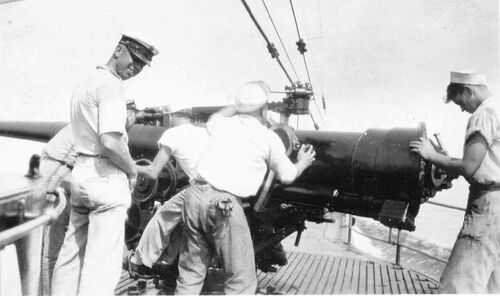S-37

USN photo NH 69128 courtesy of the NHHC.

Photo in the private collection of Ric Hedman.

Photo in the private collection of Ric Hedman.

Photo in the private collection of Ric Hedman.

Photo in the private collection of Ric Hedman.

Photo in the private collection of Ric Hedman.

Photo in the private collection of Ric Hedman.

Photo in the private collection of Ric Hedman.

Photo in the private collection of Ric Hedman.

The range is about the size of a large house range and it produced all the food for the crew as many as four times a day. There is a large griddle surface for frying meats, eggs, pancakes, toast, and pretty much anything you'd want to eat. On the right are two flat topped hot plates for cooking in pots and pans. Below is a warming drawer to keep cooked foods warm until served. Below that is the main oven for baking and roasting. On the far left side of the range is a large tank for making hot water with sight glasses and taps.
On the right is the sink that was used for preparing food and washing dishes. In this photo you can see a large, folding cutting board that has been attached to the sink face to increase the amount of room needed for cooking. Space is always at a premium and sub sailors are resourceful people.
This is also the battery compartment and on the deck under the front edge of the stove can be seen the hold downs used to stretch the canvas decking over the boards that were used to cover the battery well. According to men who sailed these boats the decks were a bright green in color.
Photo in the private collection of Ric Hedman.
Page created by:
Ric Hedman & David Johnston
1999 - 2023 - PigBoats.COM©
Mountlake Terrace, WA, Norfolk, VA
webmaster at pigboats dot com
